— It all started with the Dodge Brothers
— The Power Wagons greatly helped define what tough Dodge trucks really were
— All-new design for 1994 gave new life to the Dodge truck line
DODGE BROS
To trace the roots of the Dodge truck, you have to go all the way back to 1917, where Dodge dealers pressured the factory to come out with a truck. Seeing how the Dodge cars had become known as the “Dependable Dodge”, the truck was the natural next step. These original trucks were powered by the Dodge Brothers 35-horsepower 4-cylinder engine that displaced 212.3 cubic inches, with a compression ratio of 4.0:1.
ENTER WALTER P. CHRYSLER

Here’s a early example of a Dodge Brothers (1929) truck as used as a “paddy wagon” for the Hamtramck, Michigan, Police Department. It ran on a 140-inch wheelbase and was powered by a 208-cid inline six-cylinder engine that developed 63 horsepower.
When Walter P. Chrysler purchased Dodge in 1928, and starting with the 1929 models, the largest Dodge truck for 1929 was a 3-ton model, powered by a 241-cid six-cylinder that produced 78 horsepower, incorporating a four-speed manual transmission and four-wheel hydraulic brakes. North of the border, for the Canadian market, Chrysler for many years offered a line of “Fargo” trucks which were identical to the Dodge trucks.
For the 1933 model year, Dodge introduced re-engineered and restyled trucks, including “humpback” panels. Front-hinged doors were a feature on the mid-year 1935 models, and starting with the release of the 1939 models, Dodge trucks were promoted in advertising as being “Job Rated,” which was to say that they would fit whatever job they were given, or at least from the fine print of the ads, 95 percent of all hauling needs from their panels, pickups, stakes and chassis and cab models, 1/2-ton to 2-ton.
OLD SCHOOL
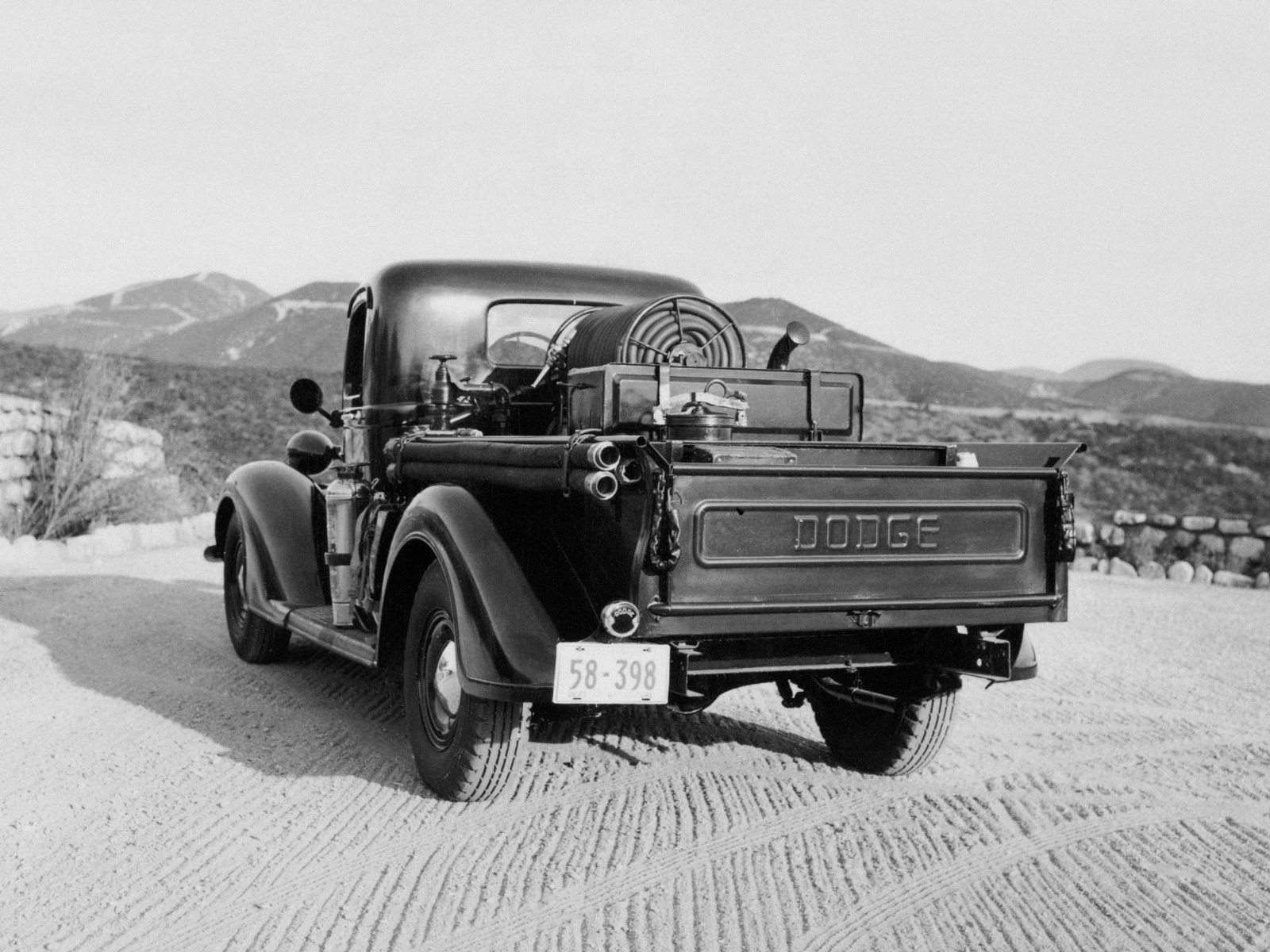
Here’s a 1937 Dodge Model MD15 “Express” 3/4-ton pickup with a 7-foot bed, with a 9-foot option also available. New this year was a 218-cid L-head inline six cylinder engine that produced 75 horsepower. Three-speed manual transmission was standard.
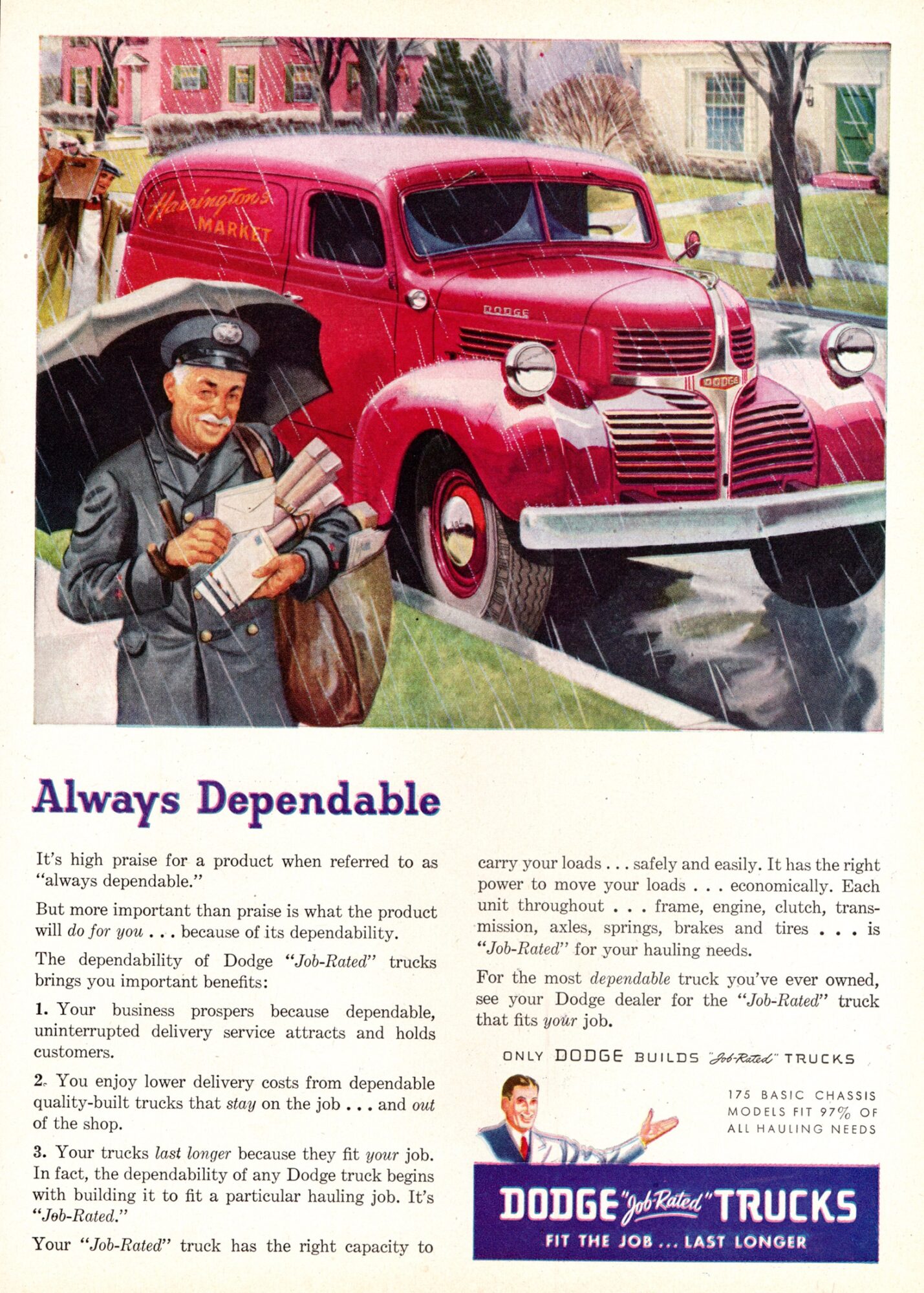
The advertisement from 1941 shows a “Job Rated” Dodge Panel Truck, which came in 116- and 133-inch wheelbase lengths, with 16-inch wheels and a standard single driver’s side bucket seat. This body shape had a lot of character and was the first year for cowl-mounted parking lights and the general body shape remained the same on these trucks after the war (production was stopped from 1943-45) all the way until 1948 when they were completely restyled.
BRING ON THE POWER WAGONS
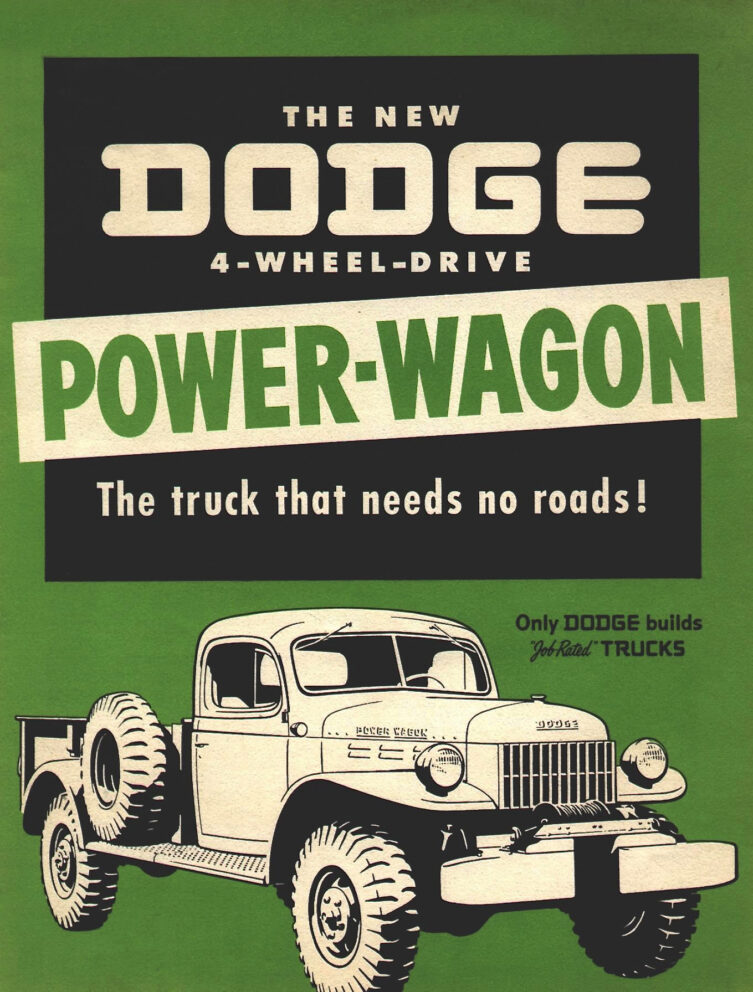
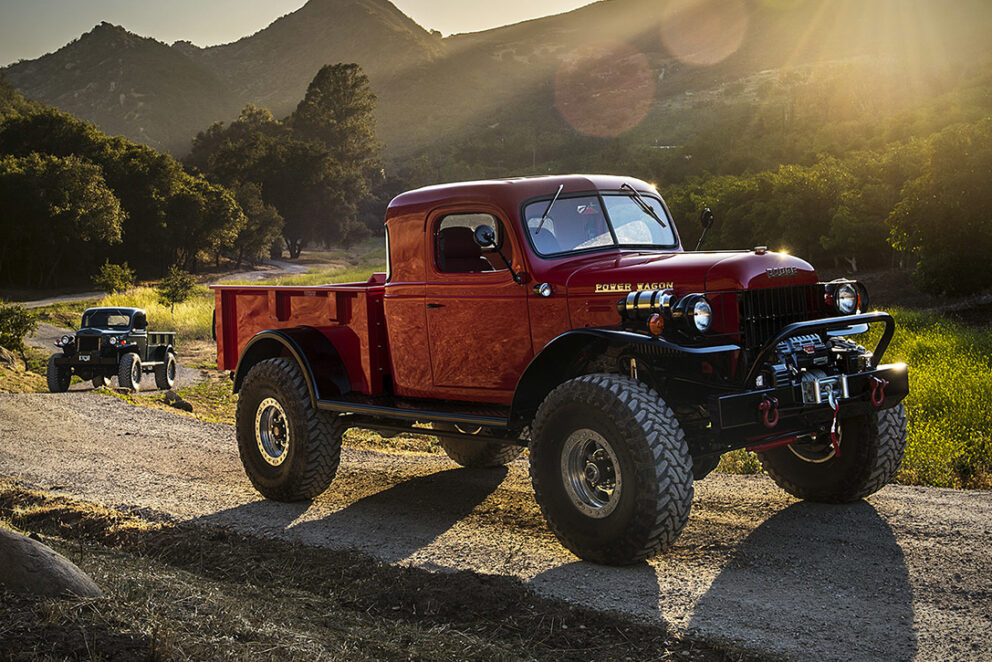
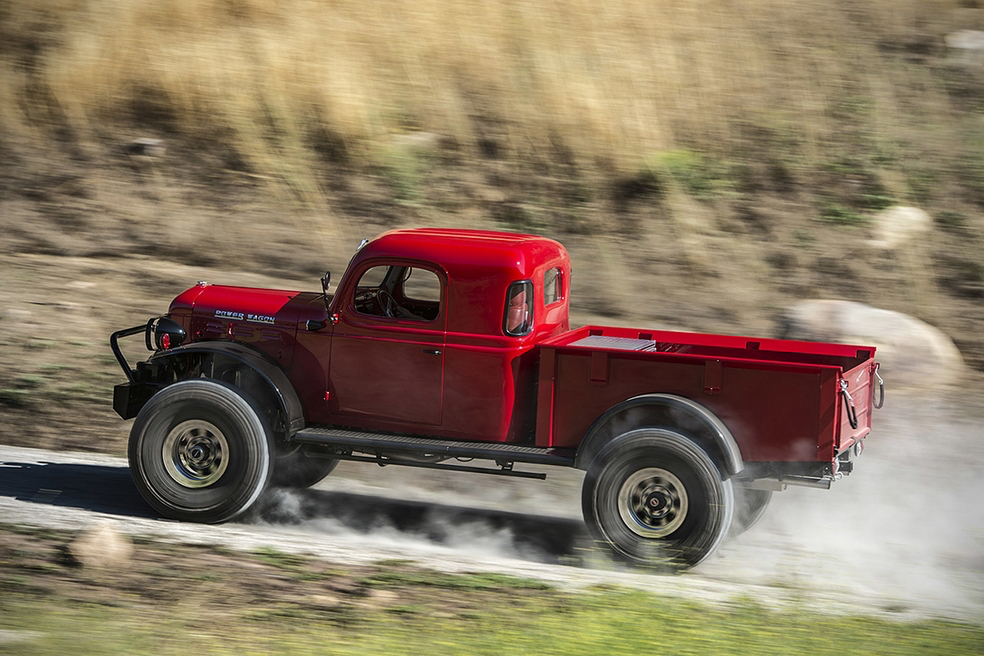
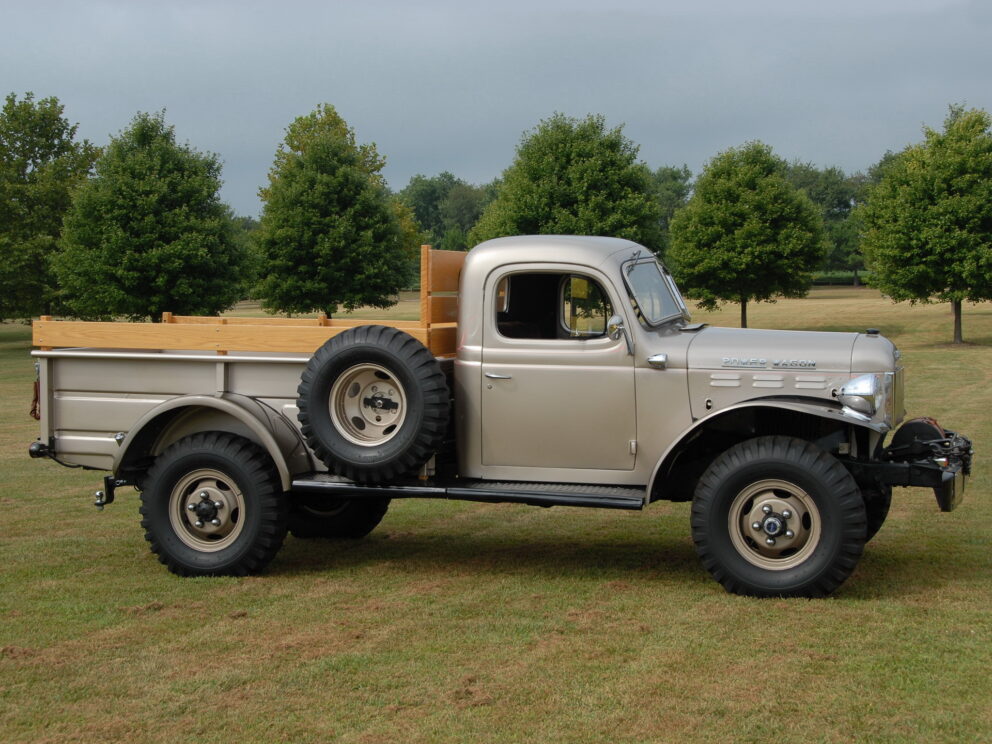
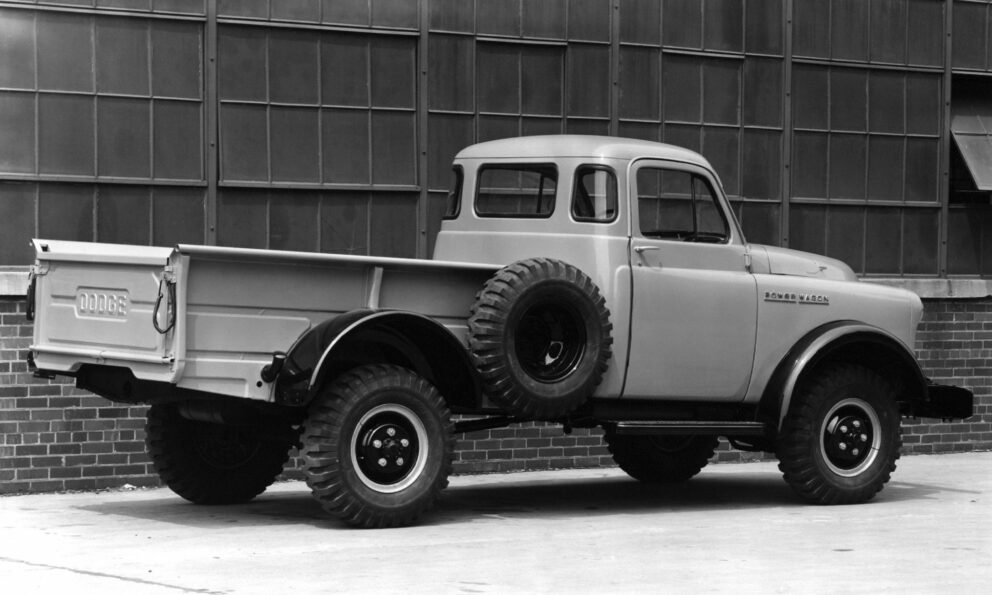
Throughout the late 1930s, the US government awarded the Chrysler Corporation contracts to build Dodge military vehicles and by the time WWII broke out, there were several types of Dodge military vehicles as part of the fighting fleet. Derived from the Dodge WC Series 4WD military trucks, a civilian version called the Power Wagon became available in late 1945.
Rated as a 1-ton, this heavy-duty pickup used the commercial cab from the 1939 model year and ran on a 126-inch wheelbase with power coming from a 230-cid flathead six (90 horsepower), shifted through a four-speed manual transmission with a single-speed transfer case. Rugged, tough as rocks, cheap to fix and lasted forever, all the while not too fast. Marketed as “the truck that needs no road” and a vehicle that could be used for a number of industrial and agricultural uses. (These flat-fendered Power Wagons were produced in three different series from the years 1945-1978 and sold worldwide.) One of the best names ever given to any truck ever was “Power Wagon” and these military-derived rigs are cherished today, some completely “resto-moded” with modern running gear and creature comforts!
POST-WAR DODGE TRUCK REDESIGN
The regular line of Dodge trucks for 1946 resumed after the war, picking up using the same 1942 versions. However, in December of 1947, Dodge was able to release an entirely new truck (B-Series) which was more advanced and featured a higher and wider windshield.
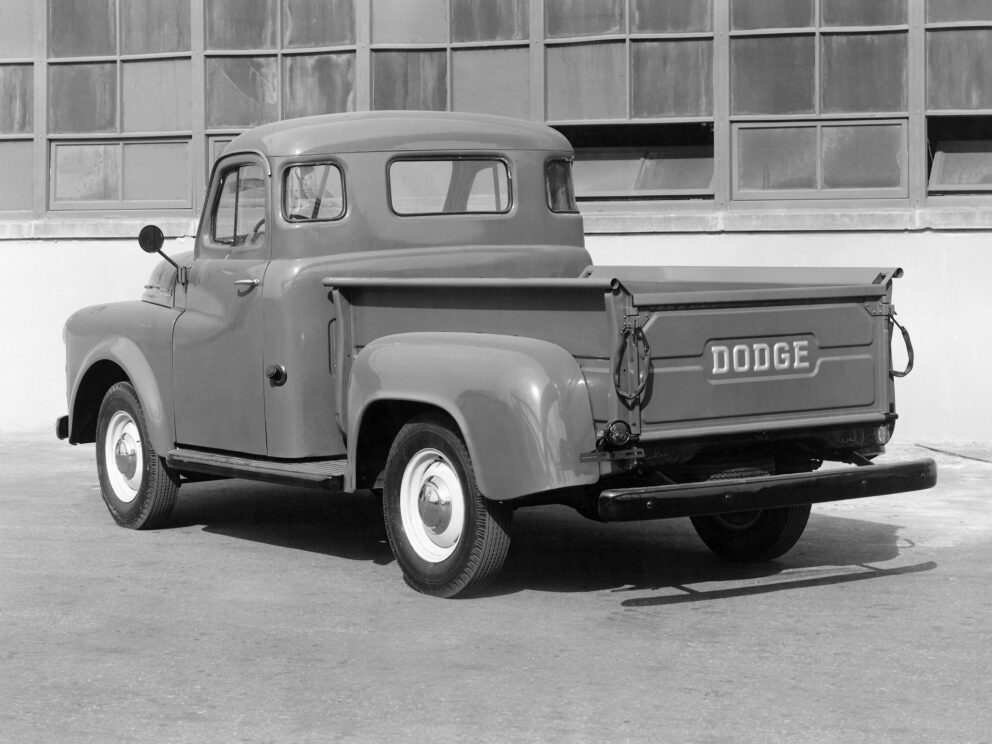
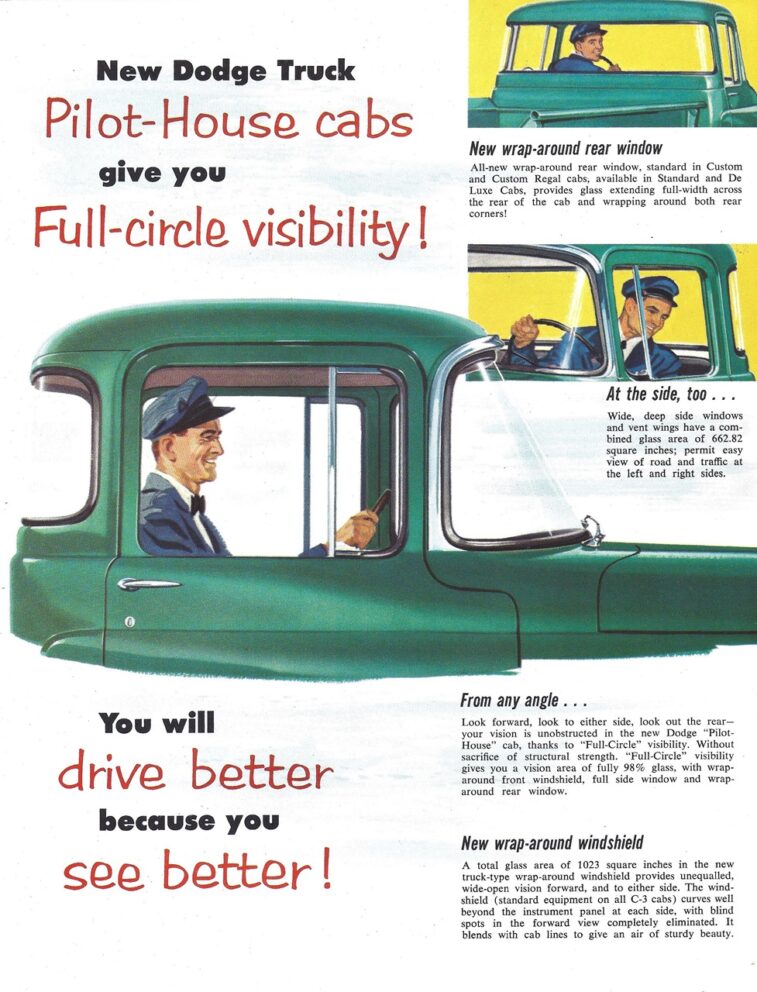
Pictured is the 1952 short bed Dodge pickup with its “pilot house” cab, named because of what they called their chair height seating which offered improved visibility, and the three rear windows designed to eliminate blind sports. The standard “pontoon” rear fender design had come in for 1951 and was used all the way until 1987 when the Utiline step side was discontinued.
Besides having a new body design and new frame, plus a one-piece curved windshield, the 1954 Dodge trucks (C-Series) were known for their available “Power-Dome V8” 231-cid engine option, which and produced 145 horsepower. The bigger Dodge trucks (2 3/4- and 3- and 3 1/2-ton) did come standard with a 331-cid HEMI® V8 engine however, producing as much as 172 horsepower using a four-barrel carburetor.
UNUSUAL STYLING ARRIVES
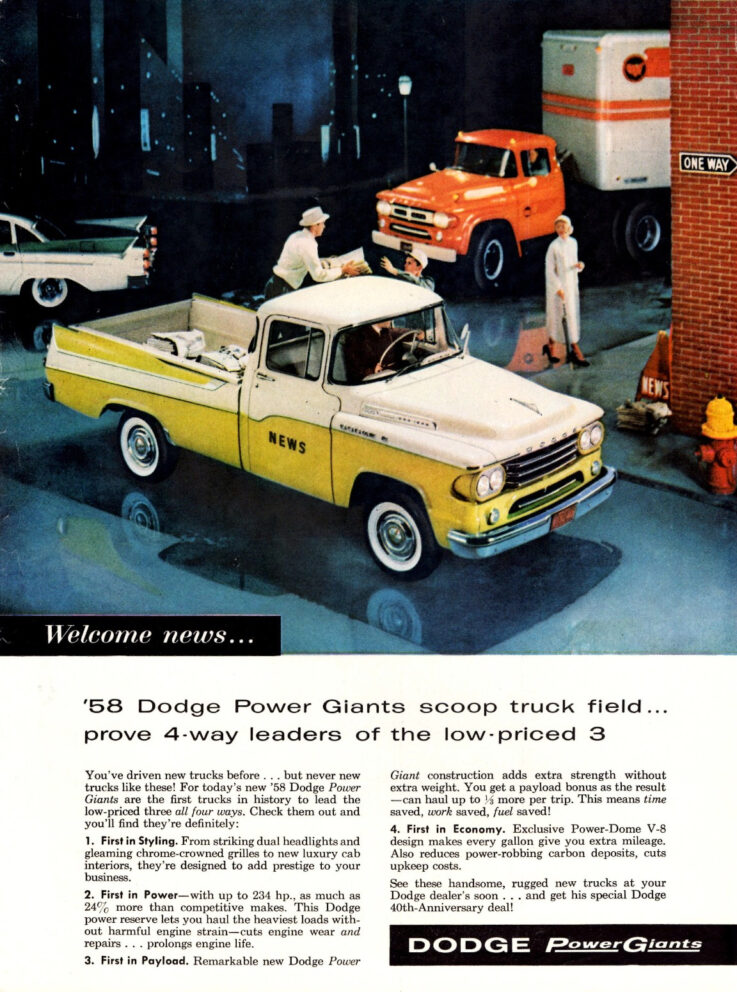
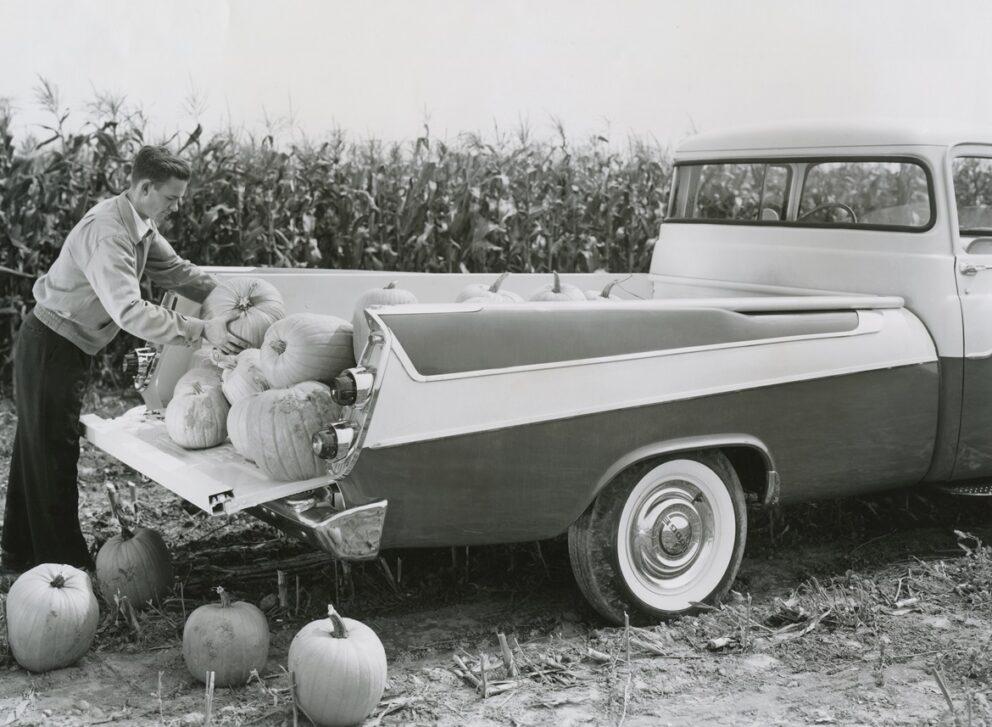
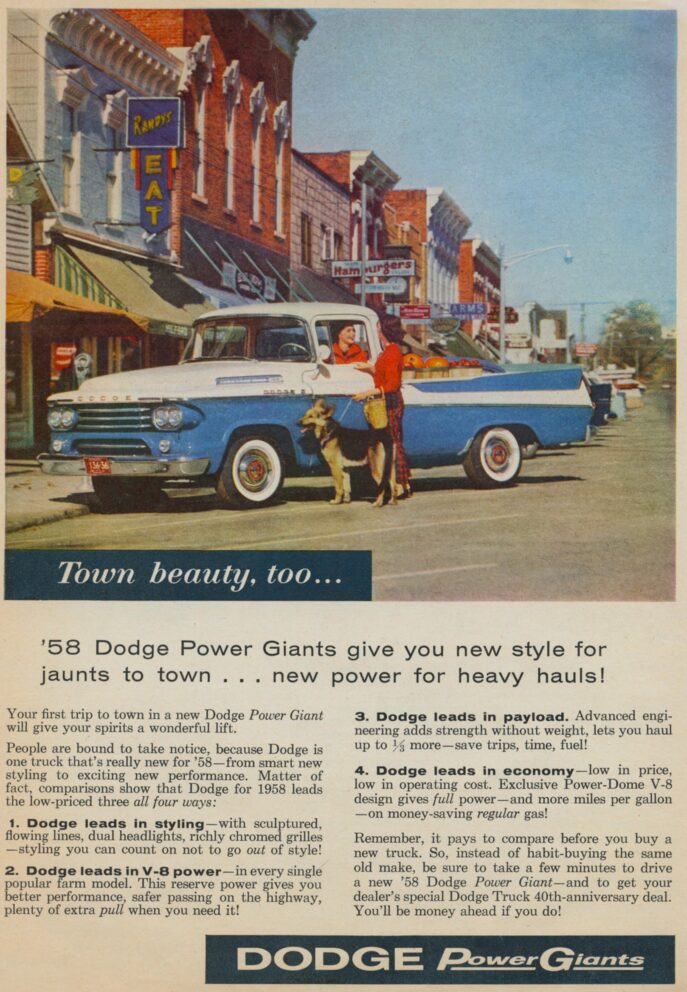

Continuing with the C-Series trucks came a “Power Giant” variant for 1957, and with that the stylists went a little crazy with adapting station wagon rear fenders onto the bed of the truck, creating a look that was to match the “Forward Look” of the car line. By the time the ’59 models were released, Dodge had come out with a freshly designed wide-body bed that looked like something that would belong on a truck from the start, and not adapted from the passenger car line. The 1960 truck had a new grille and by this time, the division needed something new, which would come the following model year.
HERE COMES THE SWEPTLINE “DART” TRUCK

For the 1961 model year, a completely new “Sweptline” truck was debuted and it featured a completely new chassis and body, which had a wider and lower silhouette that had a distinctly different appearance from what it replaced. A stamped steel grille design came for 1962 and the name Dart was dropped on the truck line, and the basic shape of the body remained the same until the mid-model year 1965, a switch was made to a full-width grille featuring twin large-diameter headlights (with anodized aluminum surround styling rings) and on the rear, a wider tailgate. The basic truck saw a lot of production and ran through the end of the 1971 model year.
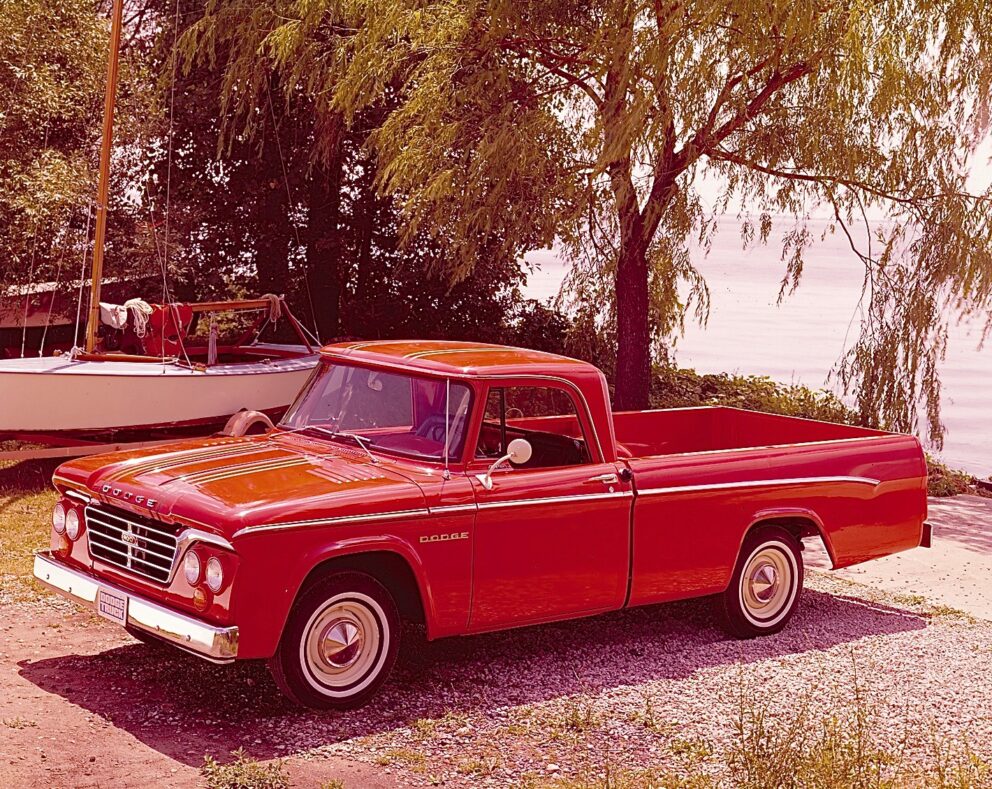

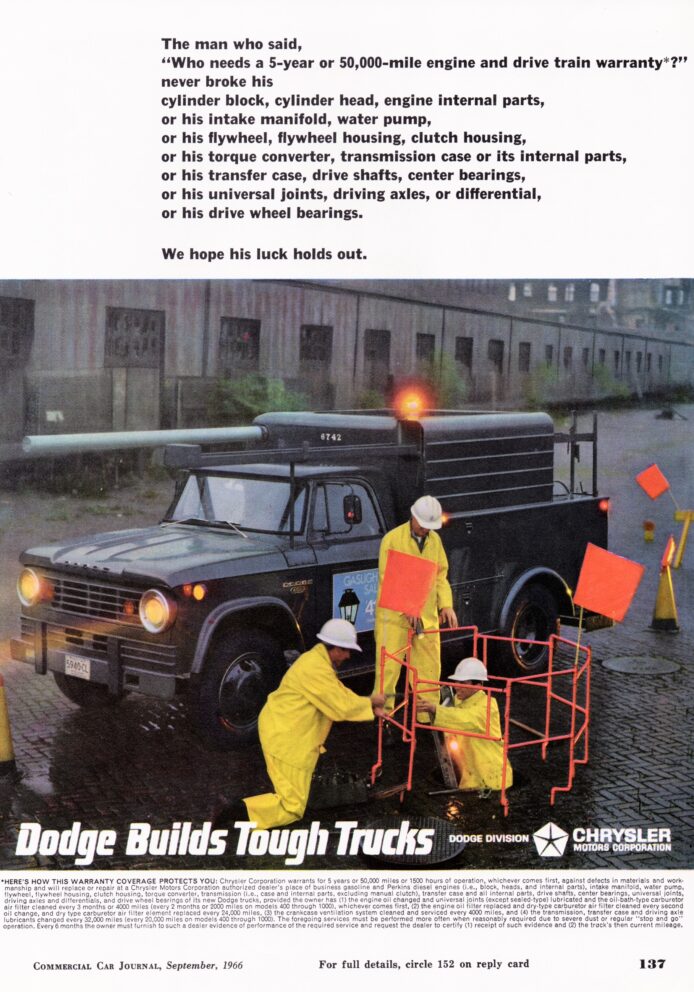
TOW TRUCKS TOO!
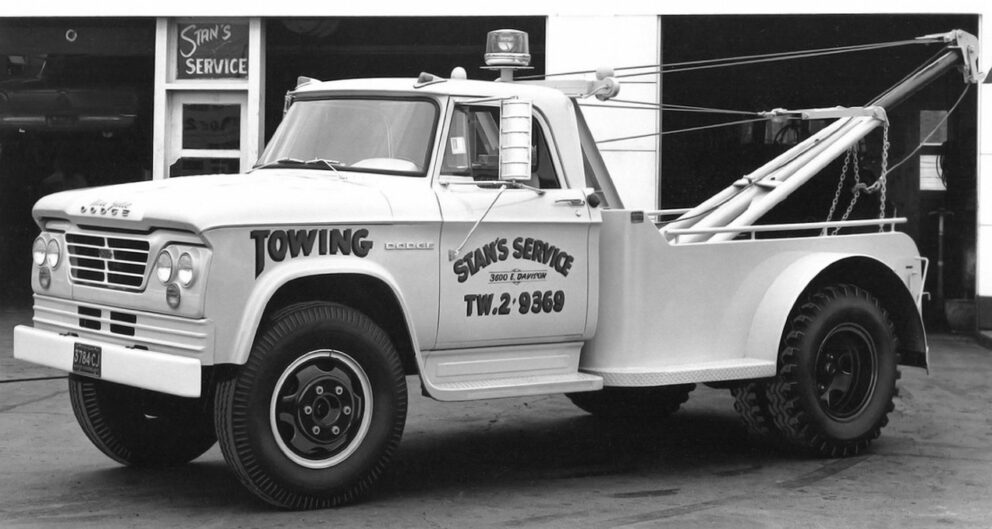

Dodge went after the tow truck market by offering buyers D-500 trucks already outfitted with the wrecker gear, as seen here at a truck convention. The pictured 1964 tow truck was equipped with dual rear wheels, a 15,000-pound two-speed rear axle and could accommodate up to a 14-ton hoist with extension boom. Maximum gross weight rating of 19,500 pounds and the engine was a 361-cid B-block. Some fun at the Detroit Auto Show as well!
FRESH STYLING FOR 1972
A much needed new Dodge truck came for 1972 and it was said to have received nearly four years of planning. Because of advancements in manufacturing techniques, the new truck’s cab side glass was now curved allowing for a roomier interior. There were great efforts put forth to create a quieter ride (more sound deadener and a double wall constructed cabin) and while still called a Sweptline, the styling was fresh and clean and much more pleasing to the eye as compared to the old version.
Under the hood, the base engine remained the 225-cid Slant Six, with three different V8s available: 318 and 360 LA-blocks and a replacement for the previous 383-cid B-block, a new 400-cid version (later a 440-cid RB-block was available). For 1973, all across the board, Dodge trucks now came with the electric ignitions as standard equipment.
INNOVATIVE CLUB CAB WITH EXTRA CAB SPACE
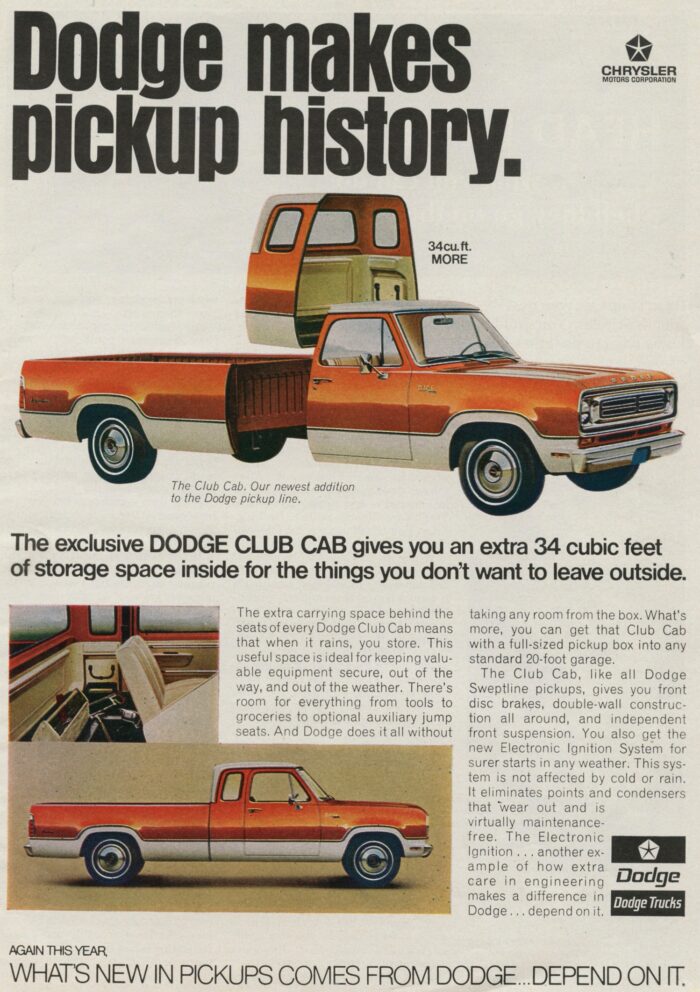
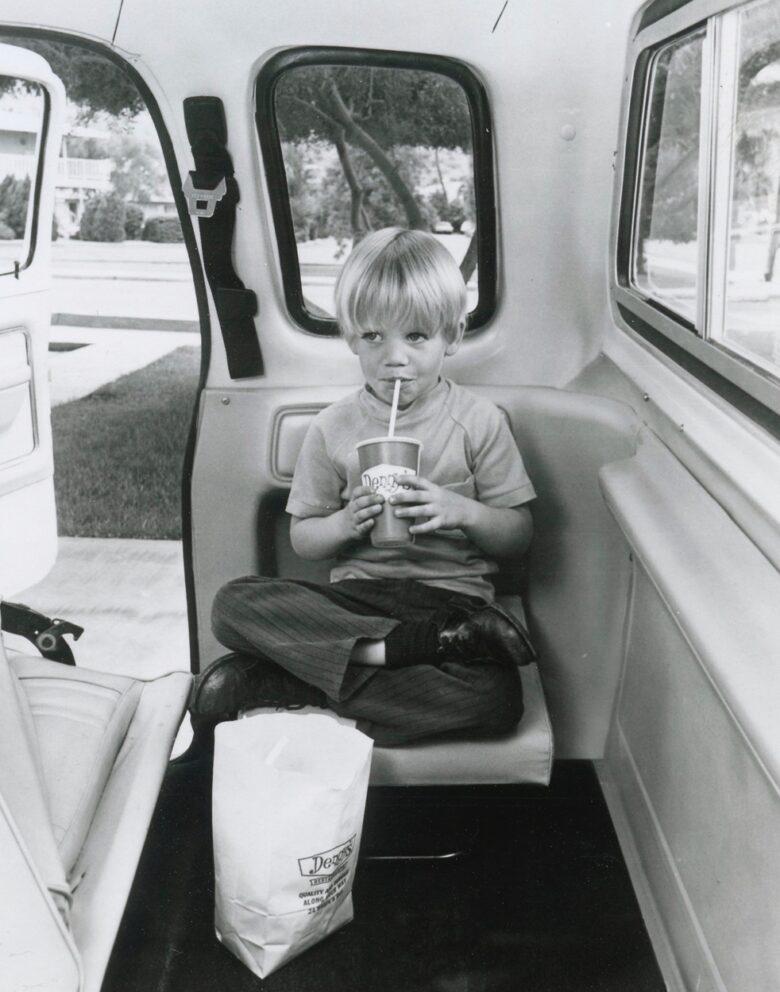
One of the real shot-in-the-arm options for Dodge was when the “Club Cab” was introduced. It was welcomed by those that wanted more space inside but didn’t want the bulkiness of a 4-door crew cab.
It was an idea that increased interior space by 34 cubic-feet and this innovative feature was a way to win over some GM and Ford truck buyers by making the extra something useful, and a place for kids (jump seat optional) all the while the truck could still fit inside a standard 20-foot garage.
MACHO 4X4
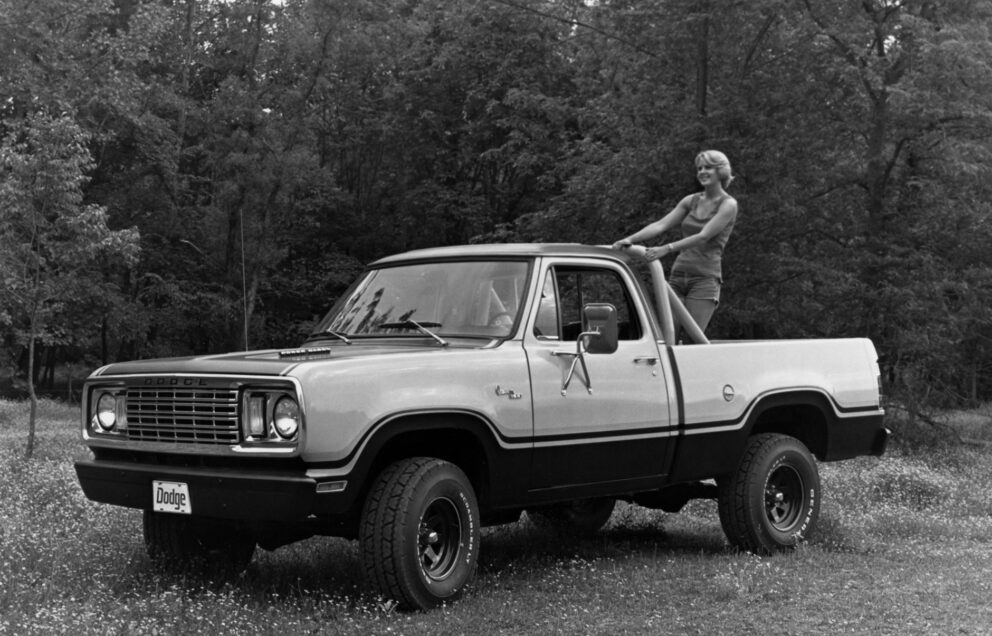
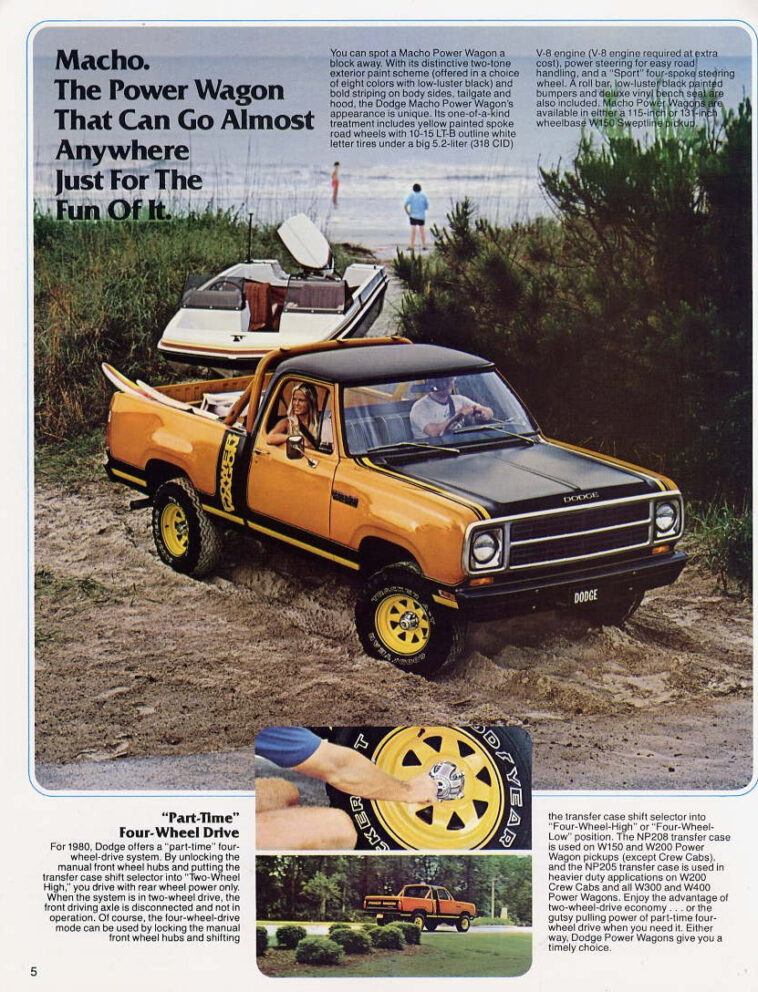
With factory roll bar, spoke wheels and off-road tires, the 1978 and ’79 W-Series (4WD) Power Wagon Sweptlines had this “Macho” version available as option, including special two-tone paint and graphics. Short wheelbase versions shown here.
RAMCHARGER SUV
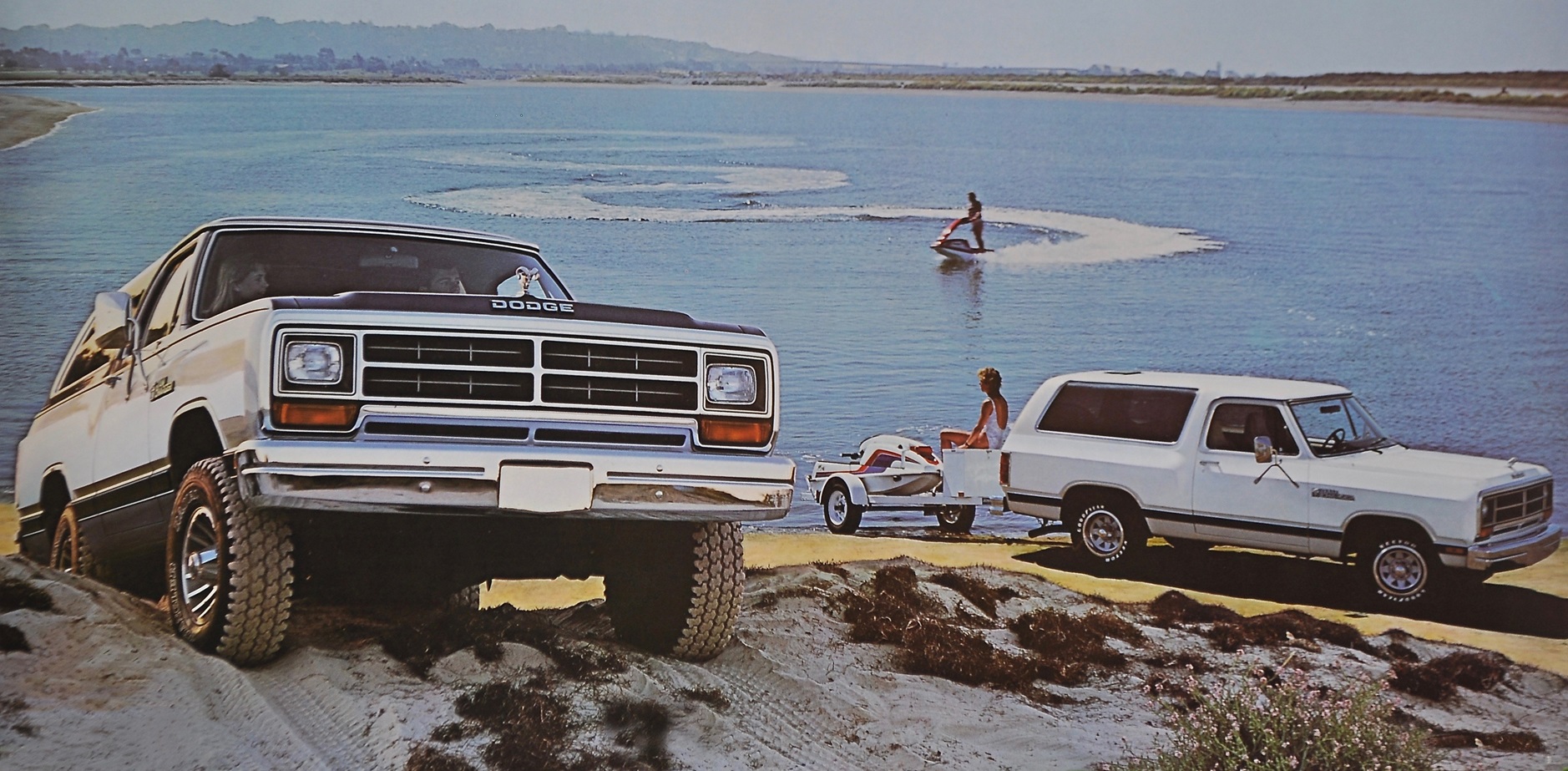
The Ramcharger was Dodge’s answer to the Chevy Blazer and shown here is a pair of 1987 models, 4×4 on the left with 2WD on the right. They first came starting in 1974 and were based on a shortened pickup chassis, with a wheelbase measuring 106 inches as compared to a shortbed truck’s 115 inches. The first-generation versions (1974-80) had a removable roof.
HOT ROD STYLE SPORT TRUCKS
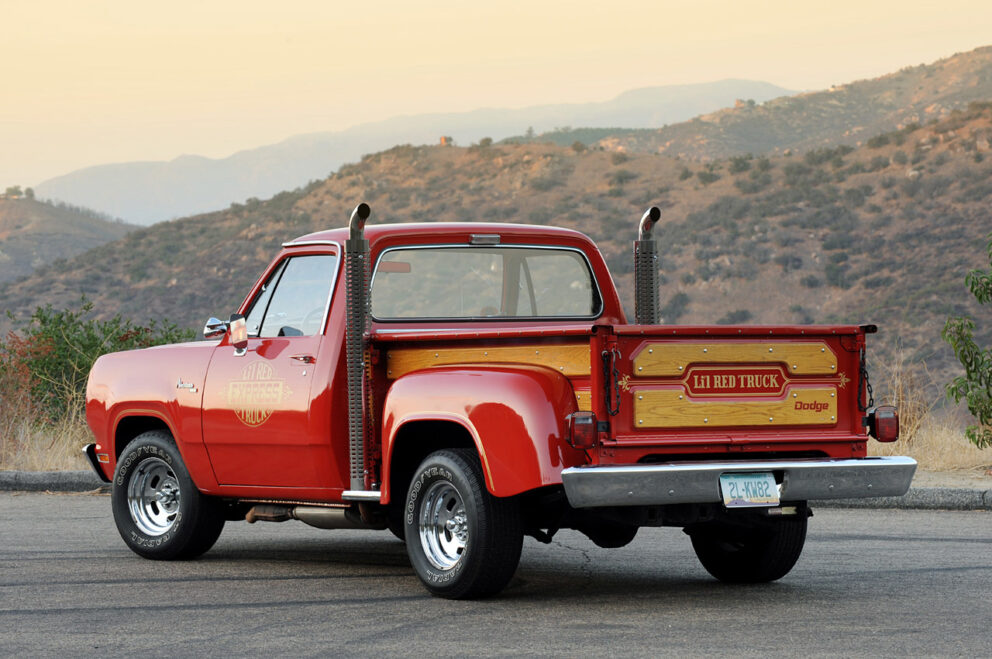

The creation of the “Lil Red Express Truck” came in the late 1970s, as an engineer at Chrysler named Tom Hoover realized that the light truck manufacturing segment of the product line had not yet been affected by the government exhaust controls. With that loophole, he came up with a plan to create what was soon to be known as “The Last American Hot Rod.” These LRT vehicles were sold in limited numbers during 1978 and ’79 and did lots in getting some respect for Dodge and its quest to keep performance alive. Also shown, the Dodge Warlock from 1977.
It was 1981 when Dodge gave their trucks another slightly freshened appearance, and an important new marketing strategy took place this year, and the start of promoting and playing up a “Ram” theme. With it came new advertising, calling the full line of trucks “Dodge Ram.” Credit for that goes indirectly to Lee Iacocca, who was at that time the top guy at Chrysler Corporation and he brought in new advertising people who came up with the plan to bring back the ram symbol. Their research revealed that what people wanted in a truck was a tough, durable, dependable, no-nonsense product.
BIG RIG STYLING

In the early 1990s, when Dodge was researching body styles for the new replacement truck that was in the works, code-named T300, they had come up with a big rig-inspired “baby Kenworth” front end that had a throwback look of what trucks used to look like, but with a smoothed, modern flavor. Within three years after the launch of the line of all-new 1994 Dodge trucks, sales jumped up and took 18 percent of the American pickup truck market.
Adding to the excitement for the new Dodge Ram and its distinctive body shape was the available 8.0L V10 “Magnum” engine, which could be ordered as an option on 3/4- and 1-ton trucks. The use of an existing production powerplant (the 360 V8) was the basis to the project, but with adding two cylinders to the block.
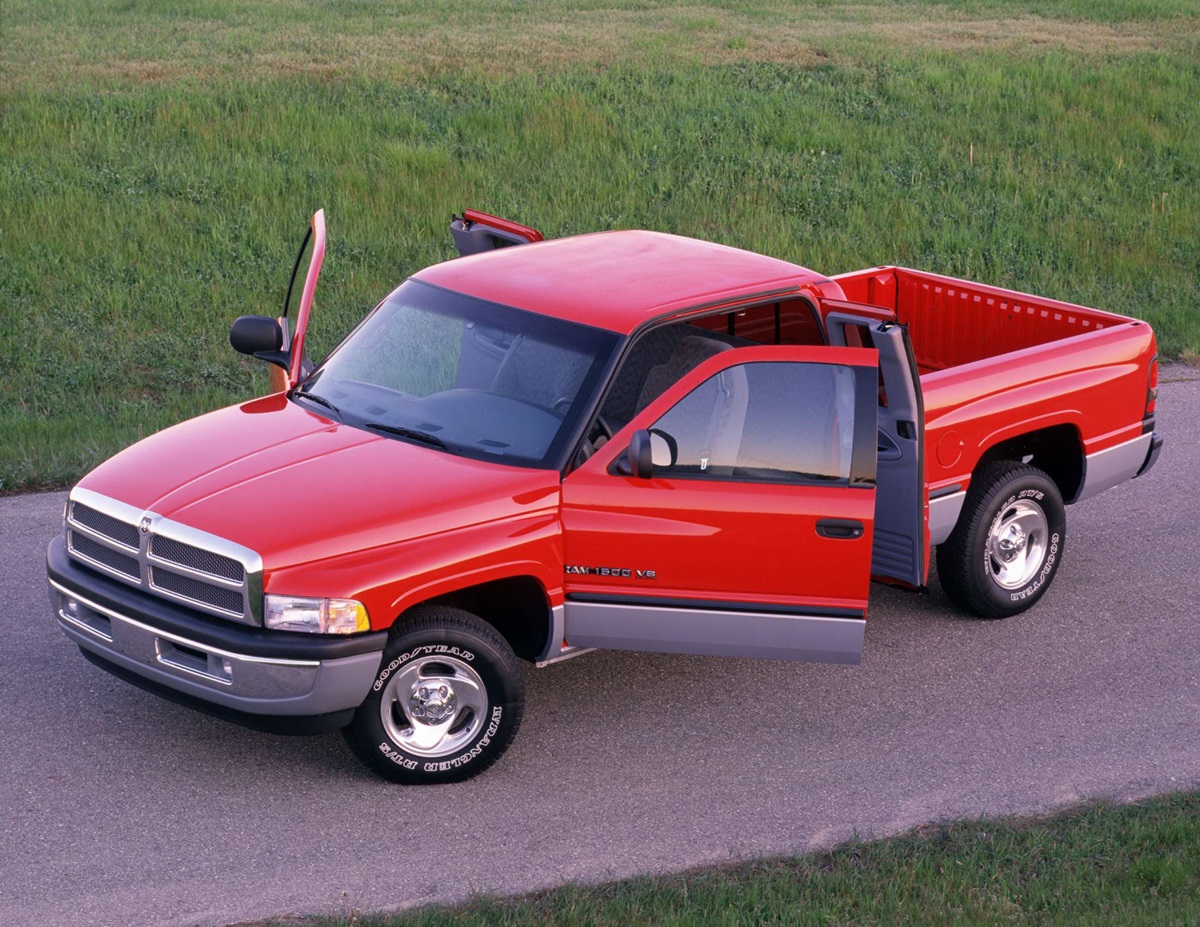
Dodge Ram trucks were refined and revised after that launch of the 1994 models, with the innovative Quad Cab arriving in 1998, and in 2001 a freshened-up look came (larger grille along with a new frame and suspension systems – the 4×4 versions now had independent front suspensions). The Dodge 5.7L HEMI engine became optional for 2003, and a “Mega Cab” was part of the 2006 facelift, which allowed for 22 inches of increased cab space and provided for seating for six, including reclining seats for rear passengers.
DODGE GOES NASCAR TRUCK RACING
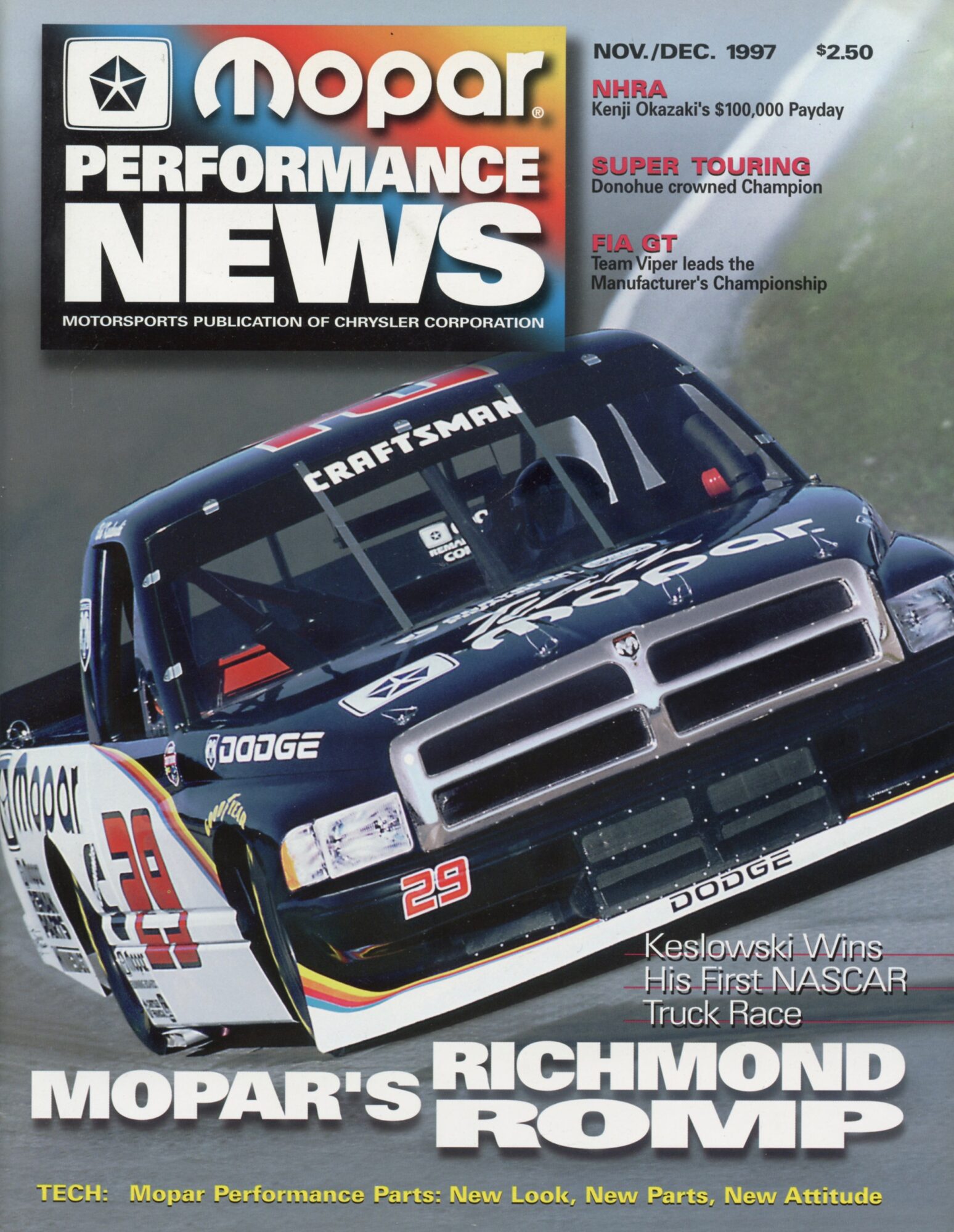
When Chrysler Corporation decided to re-enter NASCAR competition starting in 1997, using their Dodge truck, it was the first time a factory-backed Mopar® vehicle was campaigned. The corporation had pulled out of NASCAR in the mid-1970s when they became uncompetitive. The new venture in truck racing with the NASCAR series for trucks was quite successful for Dodge, winning the season championships in 2001, 2003 and 2004.
VIPER V10 500-HORSEPOWER ENGINE

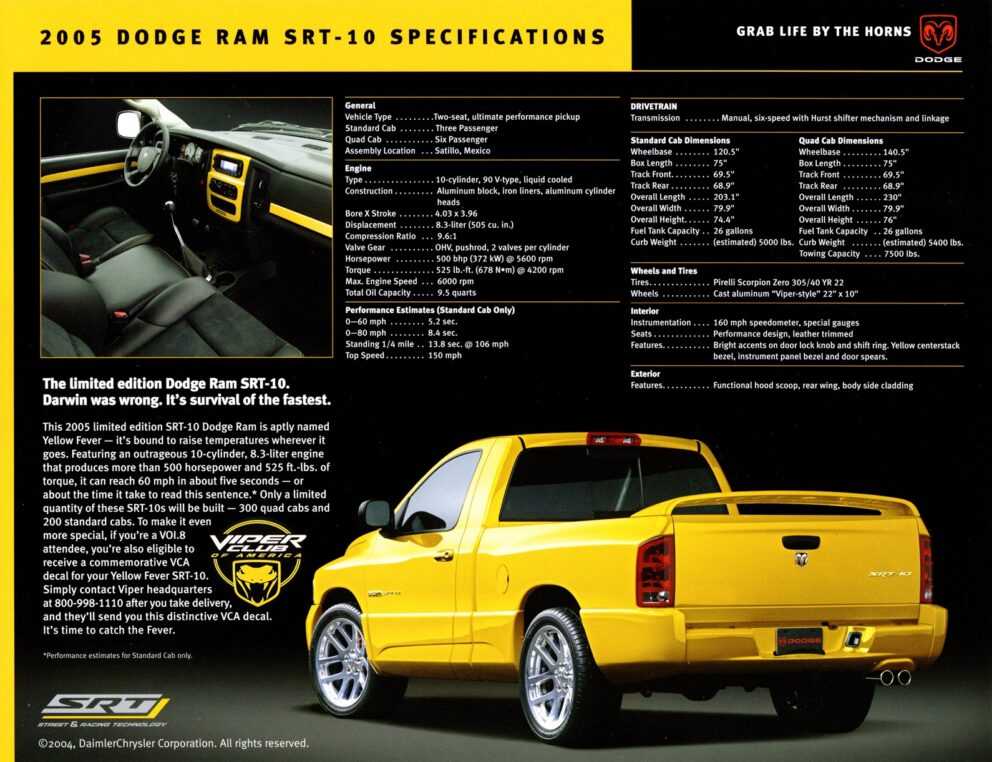
The “Yellow Fever” edition of the 2005 Dodge Ram was the SRT-10 version, which meant it was packed with the 500-hp Viper V10 engine (aluminum block and cylinder heads) with Hurst-shifted manual 6-speed gearbox. Only 500 were built (200 with standard cab, 300 with quad cab) and with standard 22-inch wheels and Pirelli Scorpion Zero rubber, along with functional hood scoop and added rear wing for stability, it lived up to its description as being the “Ultimate Performance Pickup.” Top speed was listed at 150 mph and runs the 1/4-mile in 13.8 seconds. SRT® stands for street and racing technology.
Model year 2009 saw yet another new generation of the Dodge Ram truck and here’s how Car and Driver Magazine introduced it to its readers: “If you’re lookin’ for a manly ride, it gets no manlier than the Dodge Ram. And for 2009, Dodge steps up the macho with bossy new sheet metal and a more powerful HEMI V8.”
DODGE RAM ON THE WAY
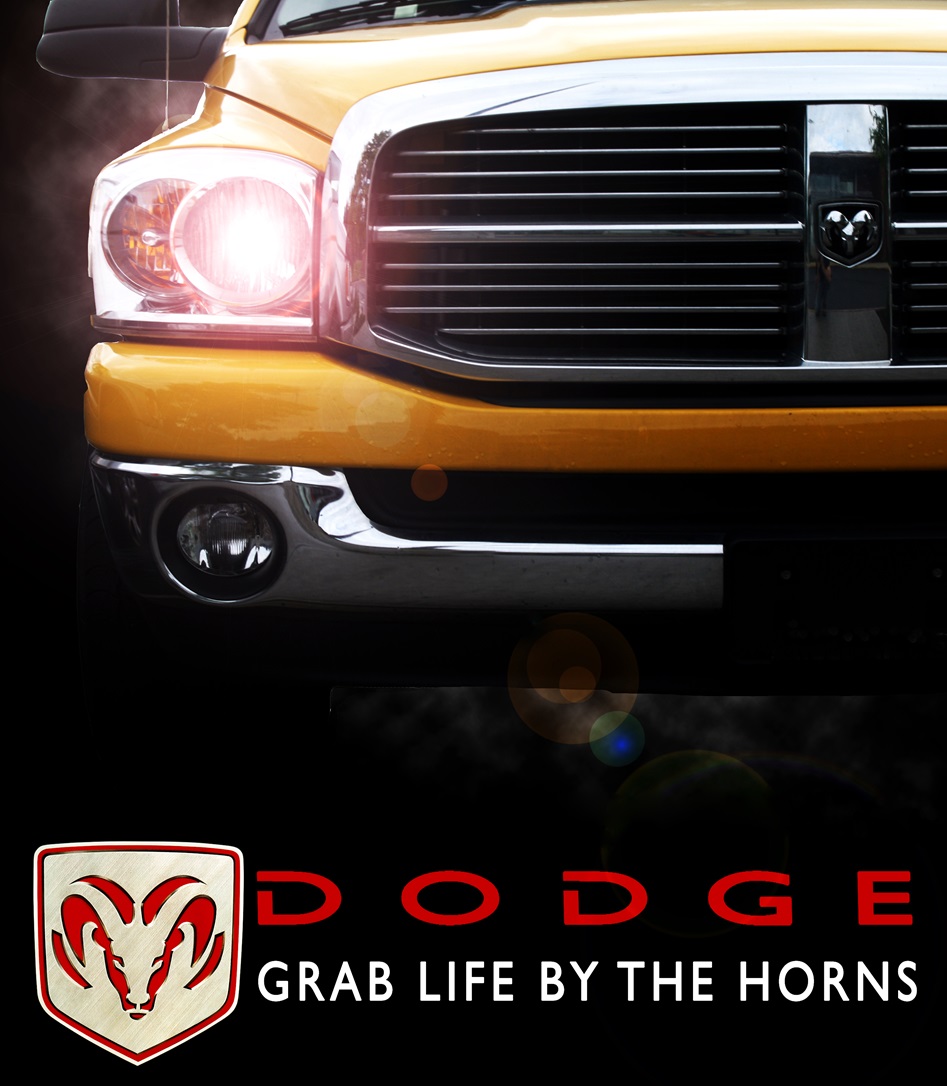
Eventually, the name “Dodge” was taken off these trucks and simply replaced with “RAM” (starting in 2011). “Grab Life By The Horns” was the advertising message and it came from the ram’s head and its horns that had been used since the early day of Dodge trucks.
On October 9, 2009, there was a major announcement from the factory, that from now on, the line of trucks that the company sells would be referred to, simply “Ram” trucks, and no longer “Dodge Rams”. The general idea was that it was the best way to get more focus on Chrysler’s truck line, and for Dodge to be more viewed as their performance division. It was a great compliment to the advertising agency that, during the Lee Iacocca era, decided that it was a good idea to bring back the Ram’s head ingredient to the line of Dodge trucks. Who would have ever guessed back then that the Ram ID would grow to be so strong that it would someday become a separate division all its own. From 1917 until the end of the 2009 model year, Dodge trucks made their mark and from 2010 until the present, the Ram Truck line has not only survived but the change-over to a new identification has been quite successful!
Author: James Maxwell
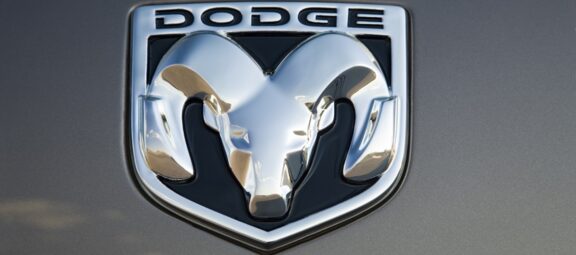
0 Comments